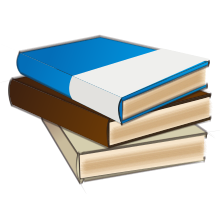This is an explanatory essay about Wikipedia:Manual of Style/Layout. This page provides additional information about concepts in the page(s) it supplements. This page is not one of Wikipedia's policies or guidelines as it has not been thoroughly vetted by the community. |
The Further reading section of an article contains a bulleted list of a reasonable number of works that a reader may consult for additional and more detailed coverage of the subject.

A chronological listing, with most recent items first, will allow the hasty or unsophisticated user to go directly to the most recent writing on a topic. The more sophisticated reader can see, in some cases, the history of thought or work on a topic. An alphabetical list is often easier to assemble, and is more appropriate when writers on a topic are well known. With a chronological listing, if there is more than one edition of a text, the Wikipedia editor has to check dates of publication, reprinting, and revisions, to establish the correct order. These can often be checked easily on https://worldcat.org (WorldCat). If the Wikipedia author does not do this, readers are left to fend for themselves.
The section is one of the optional standard appendices and footers. These appear in a defined order at the bottom of the article.
It may include brief, neutral annotations. Some articles may also or instead have an External links section; editors will occasionally merge the two if both are very short. When an article contains both sections, some editors prefer to list websites and online works in the External links section. Works listed in a Further reading section are cited in the same citation style used by the rest of the article.
In articles with very many footnotes, it may not be obvious which references are suitable for further reading, and such entries may be selectively duplicated in Further reading.
Like the External links appendix, the inclusion of a Further reading section is optional, and many good articles, and more than half of all featured articles, omit it. As of 2016, this section was present in fewer than 3 percent of Wikipedia's articles.
